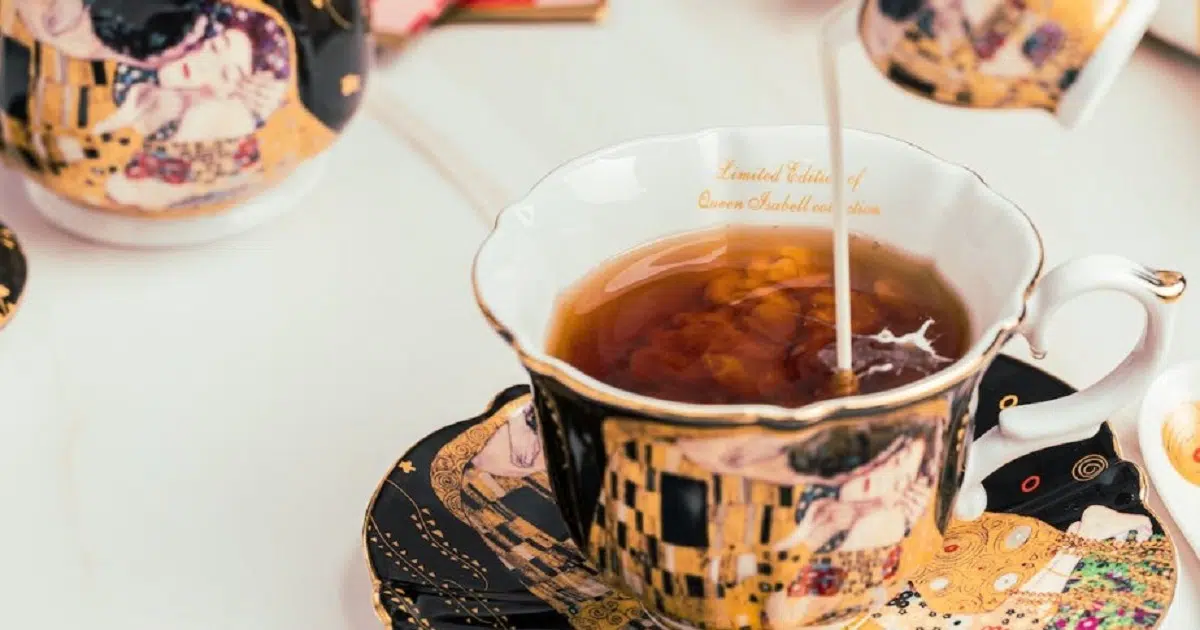The first time I saw milk being poured into a cup of tea, I froze in shock, silently thinking, “What are you doing?” For me, tea had always been a drink to enjoy with a squeeze of fresh lemon, perhaps a spoonful of honey on occasion, but never, under any circumstance, milk. That all changed when I moved to the United Kingdom, where I quickly learned that tea drinking is a serious cultural affair.

Here, people can speak at length about the strength of the leaves, the exact steeping time, and, perhaps most controversially, whether the milk should be added before or after the tea. That debate alone can stir up passionate arguments, but the bigger question for an outsider is why milk is added to tea in the first place. The tradition of adding milk to tea has surprisingly deep historical roots, dating back to the 1600s. Tea was introduced to Britain by Catherine of Braganza, a Portuguese princess who married King Charles II.
At that time, tea was a luxury drink enjoyed only by the wealthy elite, and it was served without milk in fine porcelain cups. As tea became more affordable and accessible to the general population, people began experimenting, and the addition of milk became increasingly common. Some believe this practice started as a way to protect the delicate china cups from cracking when hot tea was poured in, while others say it was meant to soften the bitterness of strong black tea. It’s also entirely possible that someone simply enjoyed the creamier texture and richer flavor that milk provided, and the idea caught on. In those early days, tea was highly prized for both its quality and cost, and adding milk was sometimes seen as a display of refinement and wealth. Pouring milk before the tea was not only a way to protect fragile cups but also a subtle signal that the tea being served was of good quality.
Over time, this small act became a ritual, and even as tea grew cheaper and more common, the habit of adding milk persisted. By then, it had evolved into a matter of personal preference rather than social status. For many, black tea brewed strong and slightly bitter was vastly improved by the addition of milk, which gave it a smoother, mellower taste.
The comforting effect of a splash of milk in tea became so ingrained in British culture that it eventually became one of the country’s defining customs, carried to other parts of the world by travelers and settlers. In the United States, however, the tradition took a different path. While tea is enjoyed in America, the practice of adding milk is far less widespread than in Britain. Instead, iced tea—often sweetened and served without milk—reigns supreme, especially in the South. That said, some Americans do enjoy milk in their tea, whether due to British heritage, travel experiences, or other cultural influences brought over by immigrants. Tea-drinking customs in the U.S. vary widely, shaped by the diversity of the population.
It’s important to note that not all British people add milk to their tea. While it is a widespread habit, it is by no means universal. Certain types of tea, such as green tea, herbal infusions, or delicate white teas, are usually enjoyed without milk. Even among black tea drinkers, preferences differ, with some enjoying their tea plain and others adding sugar, honey, or other flavorings. The question of whether to pour the milk first or the tea first continues to spark lively debates, with passionate advocates on both sides.
After the milk and tea are combined, a gentle stir blends them together, and those with a sweet tooth may add sugar or honey for extra flavor. While the practice of mixing milk into tea is most strongly associated with Britain, it’s more than just a quirky tradition—it’s a custom rooted in practicality, shaped by history, and sustained by taste. Whether you take your tea with milk or drink it “straight,” the ritual itself is part of the pleasure, a small daily comfort that connects generations. In the end, the choice comes down to personal preference, but understanding the story behind the habit offers a deeper appreciation of why, for so many in Britain, tea simply feels incomplete without that signature splash of milk.





